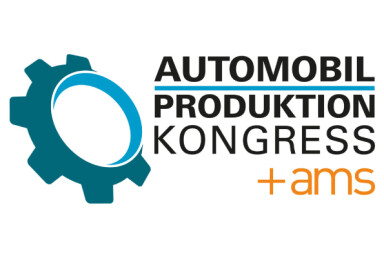Digital Workforce Development
Smart Factories need smarter people

As automotive manufacturers accelerate digital transformation, the industry faces a fundamental reckoning about workforce development. Four industry leaders reveal how they are reshaping roles, building skills and bridging the gap between automation ambitions and human capability.
Automakers now face a moment of reckoning as the ambitions of smart manufacturing outpace the preparedness of the workforce. Whilst manufacturers pour capital into advanced technologies, a more fundamental challenge emerges: ensuring the people operating these systems possess the skills, engagement and adaptability to make digital transformation succeed.
At the Automotive Manufacturing North America (AMNA) conference, a panel of industry leaders confronted this challenge directly, revealing divergent perspectives on how to balance technological ambition with human capability. Their insights expose an industry grappling with questions that extend far beyond software implementation.

Understanding pain points before proposing solutions
Trent Randalls, manufacturing engineer at BorgWarner, has learned through trial and error that successful digital transformation begins not with technology selection, but with understanding workforce pain points. His approach challenges the conventional top-down model of technology deployment.
"The pain points that an assembly operator experiences are different from that which a manufacturing engineer experiences," Randalls explained. "It is important to gauge the workforce on what their pain points are, then identify what problem you are trying to solve. To get buy-in from everyone involved—not just shop floor workers, but all the way up to management—you need to identify their pain points and tie that to the problem."
This methodology represents a fundamental shift in how manufacturers approach digitalisation. Rather than imposing solutions, Randalls advocates for building narratives that connect technical implementations to tangible improvements in daily work experiences. Research from Rockwell Automation, for example, indicates that change management has emerged as the top workforce-related challenge for automotive manufacturers over the next 12 months, cited by 37% of respondents.
The approach extends beyond mere consultation. Maria Rossana Ruiz, recent manufacturing engineer at Ford, described how the company has institutionalised design thinking through its catalyst teams. These cross-functional groups, which span manufacturing, product development and cybersecurity, collaborate on problem-solving across Ford's global operations.
You have to teach your people to operate in an environment where change is constant and you are not in charge...Understanding how CNC (Computer Numerical Control) works, how to mill, how to forge, how to do sand casting—that is all immaterial because computers will have more knowledge than you on how to do that
"We solve problems across the entire Ford network—Europe, Mexico, United States and parts of Asia," Ruiz said. "People pick what problem they will solve, we interview those with the same problem, research the pain points, and from there identify the best solution."

The distributed manufacturing revolution
Whilst some panellists focused on incremental workforce development within existing structures, Tom Kelly, executive director of Automation Alley, presented a more radical vision. His perspective challenges fundamental assumptions about manufacturing organisation and workforce requirements.
Kelly argues that manufacturing is transitioning to a software-first paradigm where computers will handle product design through generative algorithms, engineers will make feature trade-offs, and production will shift toward distributed additive manufacturing. His organisation has implemented a project which has distributed production-capable 3D printers to 300 small manufacturers within a 50-mile radius. "It's distributed, independent, agile manufacturing on demand," he says.
"People ask, 'why would you have 300 parts in 300 places? You have got to make them all at once to get them to GM or Ford,'" Kelly said. "But that is not a problem. Drones can pick up one part at a time and deliver it in real time." This paradigm is antithetical to the underlying assumption of modern manufacturing which envisages centralisation as unambiguously efficient.
This vision also carries major implications for workforce development. Kelly contends that traditional manufacturing knowledge becomes commoditised when computers possess superior technical expertise. Success instead then, depends on creativity coupled with exponential technologies.
"You have to teach your people to operate in an environment where change is constant and you are not in charge," Kelly said. "Understanding how CNC (Computer Numerical Control) works, how to mill, how to forge, how to do sand casting—that is all immaterial because computers will have more knowledge than you on how to do that."

Scaling challenges across diverse operations
The theoretical frameworks proposed by Kelly contrast sharply with the practical challenges faced by manufacturers operating extensive global networks. Murugan Boominathan, senior analyst for manufacturing solutions at Magna International, described the complexity of scaling digitalization across 330 divisions whilst maintaining local customization.
"Doing a proof of concept is very easy," Boominathan explained. "You can go to a lighthouse plant, set it up, find it working, and then take that use case and scale it. But not all plants have the same processes or platform, so you have to tweak them the way they need it."
His solution involves building core frameworks with room for local innovation. Rather than enforcing rigid standards, Magna creates systems that can be customised to meet specific operational needs whilst maintaining fundamental compatibility. Industry research from Mercer, for example, indicates that most traditional automotive businesses lack the capability to effectively upskill their existing workforce or attract talent from other industries with different cultures and working methods.
BorgWarner faces similar challenges operating as a decentralised organisation where each plant functions as an independent business unit. Randalls noted that whilst this structure enables innovation, it can also lead to duplicated efforts when multiple facilities unknowingly work on identical solutions. Silos of knowledge therefore, need to be broken down to enable innovation alignments that will prevent this overlap wastage from occurring.
There might be a time, not so far away, when many jobs vanish...We all know as leaders - it is coming. We have to prepare people and inform them in the right way, at the right time
"There are probably ten other plants doing the same thing, but we do not know whether that is the case," Randalls said. "One reason this digitalisation council was formed [an internal corporate body that supports the CEO's efforts to advance technology and processes within BorgWarner] is to open up communication and allow knowledge sharing among the plants. This means we can divide focus on different technologies and reconvene to make faster progress collectively."
The council approach enables BorgWarner to distribute technology development across facilities, with each plant focusing on different innovations before reconvening to share progress. This structure attempts to balance local autonomy with network-wide advancement.

Training for elevated roles
Beyond organisational structures, panellists addressed how digitalisation transforms individual roles. Ruiz described how introducing collaborative robots (cobots) for inspection tasks enables operators to transition from repetitive manual checking to more sophisticated responsibilities.
"It's beneficial to start with a digital comparison, using tools like digital twins for a manufacturing plant," Ruiz explained. "It's also crucial to get operators on board. For example, introducing a cobot for inspections can be very effective. This approach reassures the maintenance team and trains them to evolve their roles into more significant ones.
"Instead of manually checking thousands of vehicles for errors, AI and technology can handle that, resulting in fewer errors and a more elevated, trained role for the employees," she added.
This strategy recognises that technology adoption requires genuine role enhancement rather than simple displacement. Training becomes simplified as operators learn to manage systems through human-machine interfaces (HMIs) rather than performing tedious manual tasks. The result, according to Ruiz, makes employees more valuable whilst improving quality control.
Major automotive manufacturers are investing significantly in workforce development, with Toyota Burnaston recently teaming up with Rockwell Automation to establish a hybrid training academy that combines hands-on factory learning with digital tools such as PLCs and HMIs, illustrating how manufacturers are institutionalising the shift from manual labour to digital competence by equipping technicians to collaborate with automation rather than be replaced by it.
Watch the Highlights: Automotive Manufacturing North America (AMNA) 2025
The leap versus crawl debate
A question from Martin Deschenes, North America Chief Manufacturing Officer, Denso, who was in the audience crystallised the tension underlying the discussion: can incremental improvement and transformative leaps coexist within large organisations? The responses revealed different strategies for managing this balance.
Kelly argued for establishing dedicated teams tasked with disrupting existing business models. "You have to have a SWAT team that lives in Silicon Valley with one goal: to come back and put us out of business," he said. "What is your business plan that is going to destroy us?"

This approach acknowledges that traditional manufacturing organisations struggle to think exponentially. Silicon Valley operates in an environment where technology rapidly displaces existing solutions, and Kelly believes manufacturing must adopt similar thinking.
Randalls offered a more measured perspective, describing how BorgWarner positions itself for transformation whilst maintaining operational stability. "We are positioning ourselves to make that leap," he said. "We have plants that must run and get parts out the door on time, but we are also spending time collaborating on innovation."
The approach embodies BorgWarner's motto of thinking big, starting small and scaling fast. By testing different technologies at different facilities and proving concepts before wider deployment, the company attempts to balance innovation with reliability.
Ruiz highlighted Ford's progress standardising data, documentation and production lines across facilities, including international operations. "When you do this, you create a more cohesive process," she explained. "You can send an employee to work in Mexico City, for example, and it is much easier because they already know the line since it is a clone of our plant in the United States."
Managing the human impact of digital maturation
Boominathan raised perhaps the most uncomfortable - and generally underemphasised - aspect of digital transformation: the potential displacement of workers. "There might be a time, not so far away, when many jobs vanish," he acknowledged. "We all know as leaders - it is coming. We have to prepare people and inform them in the right way, at the right time."
Industry projections from Rockwell indicate that manufacturers must address a potential worker gap of 7.9 million by 2030, requiring not only automation investment but also seeking workers with AI experience and soft skills like communication, adaptability and analytical thinking.
Despite the digital-gold rush among many - if not most - automotive producers, technology implementations fail without workforce buy-in, efficiency gains evaporate without proper training, and innovation stalls without human engagement.
This acknowledgement forces manufacturers to confront the ethical dimensions of digital transformation. Whilst technologies promise efficiency gains, they also threaten livelihoods. Boominathan argued that organisations must provide clear pathways for upskilling, giving workers opportunities to adapt rather than simply displacing them.
The discussion revealed that workforce development in smart factories extends beyond technical training. It requires understanding pain points, building engagement, creating pathways for advancement, managing cultural transformation and confronting difficult questions about the future nature of manufacturing work.
As automotive manufacturers accelerate digital transformation, the human element remains not just relevant - but critical to the shift. Because despite the digital-gold rush among many - if not most - automotive producers, technology implementations fail without workforce buy-in, efficiency gains evaporate without proper training, and innovation stalls without human engagement.
The AMNA panel demonstrated that successful smart factories require smart workforce strategies. Whether through incremental upskilling or transformative leaps, vehicle manufacturers must invest as much thought and capital in human development as they do in machines.



